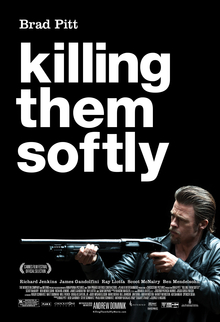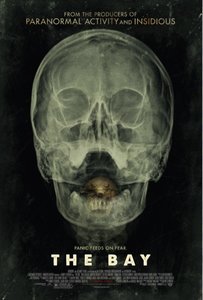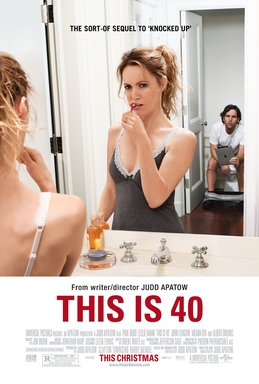
This biopic of Alfred Hitchcock’s making of Psycho attempts to juggle three stories: the strain on the relationship between the director (Anthony Hopkins) and his wife (Helen Mirren), Hitchcock’s own perverse infatuations with his leading ladies, present and former (Scarlett Johannson as Janet Leigh and Jessica Biel as Vera Miles), and the actual making of the movie, with its unsettling, revolutionary ties to the Ed Gein murders. Each of these threads is presented in a tepid and/or listless manner.
Hopkins and Mirren are quite good, but the script gives Hitch little to do but mope about his wife’s inattention, and Mirren’s near-dalliance with another writer (Danny Huston) is a bit uncomfortable. Either the 68 year old Mirren, or Alma Hitchcock (she was 60 at the time of the making of Psycho) are too old for the communication of unquenched sexual urges necessary for the role.
As for Hitchcock’s own urges, the film cops out. The director is shown as a peeping tom, and any darker heart is reflected only by his silly imagined conversations with Gein. Leigh and Miles commiserate a bit on the director’s peculiarities, but nothing particularly upsetting is revealed, and neither actress is capable of delivering some deeper psychic injury or fear. At best, they cluck, “oh, be careful. You know old Hitch.” Given the director’s very disturbing behavior prior to, during and after Psycho, the wispy treatment seems cowardly. But even if the filmmakers were reluctant to travel that dark path, they missed many other opportunities to illuminate the eccentricities of the director. The lore has it that Leigh and Hitchcock were both unhappy with John Gavin’s work in his love scene with the former, and that Hitchcock instructed her to “take matters in her own hands” to amp up the passion. Yet this gem of a vignette is left out?
Finally, there is the risky making of Psycho, a film Hitchcock bankrolled himself when the studio became leery over the subject matter. Hitchcock is ostensibly based on Alfred Hitchcock and the Making of Psycho by Stephen Rebello. which I have not read but hope is more interesting than was portrayed in the film. The making of the film is characterized as worrisome at times. The director’s financial stress is shown, and he pouts when his wife is away, but that’s about it. Nothing of Hitchcock’s craft is developed, and some of the hurdles, such as the fight with the censors over the shower scene, are played mainly for laughs. So much is missed.
Take Rebello in a 2010 interview:
“But she is killed in the shower in the novel. In fact, Hitchcock told many people that he was most attracted by Bloch’s notion of a murder coming out of the blue in an everyday, confined setting—the shower, where we feel relaxed and complacent but where we’re utterly vulnerable. Hitchcock was thrilled with the idea of shocking audiences by casting a major star as the heroine and killing her off so early in the picture. That violated every Hollywood rule. Bloch’s heroine has her head cut off in the shower, not exactly the kind of thing that even Hitchcock could have gotten away with, even if he had been tempted. Bates in the novel is middle-aged, pudgy, alcoholic, brooding, unattractive, repugnant. He also has extensive conversations with his mother, which would have been fatal and a cheat on film. Casting Anthony Perkins was a lucky masterstroke; he’s as charming, attractive, sad, perverse, and lethal as earlier Hitchcock killers like the one Joseph Cotten played in Shadow of a Doubt and Robert Walker played in Strangers on a Train. Perkins had already worked with top directors like William Wyler, Anthony Mann, and Stanley Kramer, and Paramount had spent lots of money promoting him as a successor to the late James Dean or comparing him to the young James Stewart or Henry Fonda. Although he had become a teen idol and even made some hit records, things hadn’t quite clicked and, at the time, Perkins felt typecast and owed Paramount a movie. Hitchcock could hire him inexpensively. It was a perfect storm.”
There is so much here, but the film merely gives us Hitchcock cackling at killing Leigh early and the tut-tutting over the ghastly plot, with Alma disapproving, the powers that be huffing “You can’t do that!” and Hitch gleeful as the bad little boy.
One added point. As noted, Johannson and Biel are pedestrian, but they aren’t the only ones. The bullying studio head is played in embarrassingly broad fashion by Richard Portnoy, James D’Arcy’s Anthony Perkins is an impression rather than an embodiment, and Ralph Macchio is unfortunately unearthed for a short scene as the writer, Joseph Stefano. The Karate Kid is not missed. And I can watch Robocop only so often to remove the taste of yet another Kurtwood Smith uptight authority figure performance.
At the end, you’re left with a damning question – why make this picture? It does little to communicate Hitchcock’s demons or his genius, it meanders and plays it safe, an unfortunate testament for a cinematic trailblazer. One that should not have been delegated to director Sacha Gervasi, whose resume’ is anchored by his 2008 documentary of a Canadian metal band, Anvil: the Story of Anvil.










